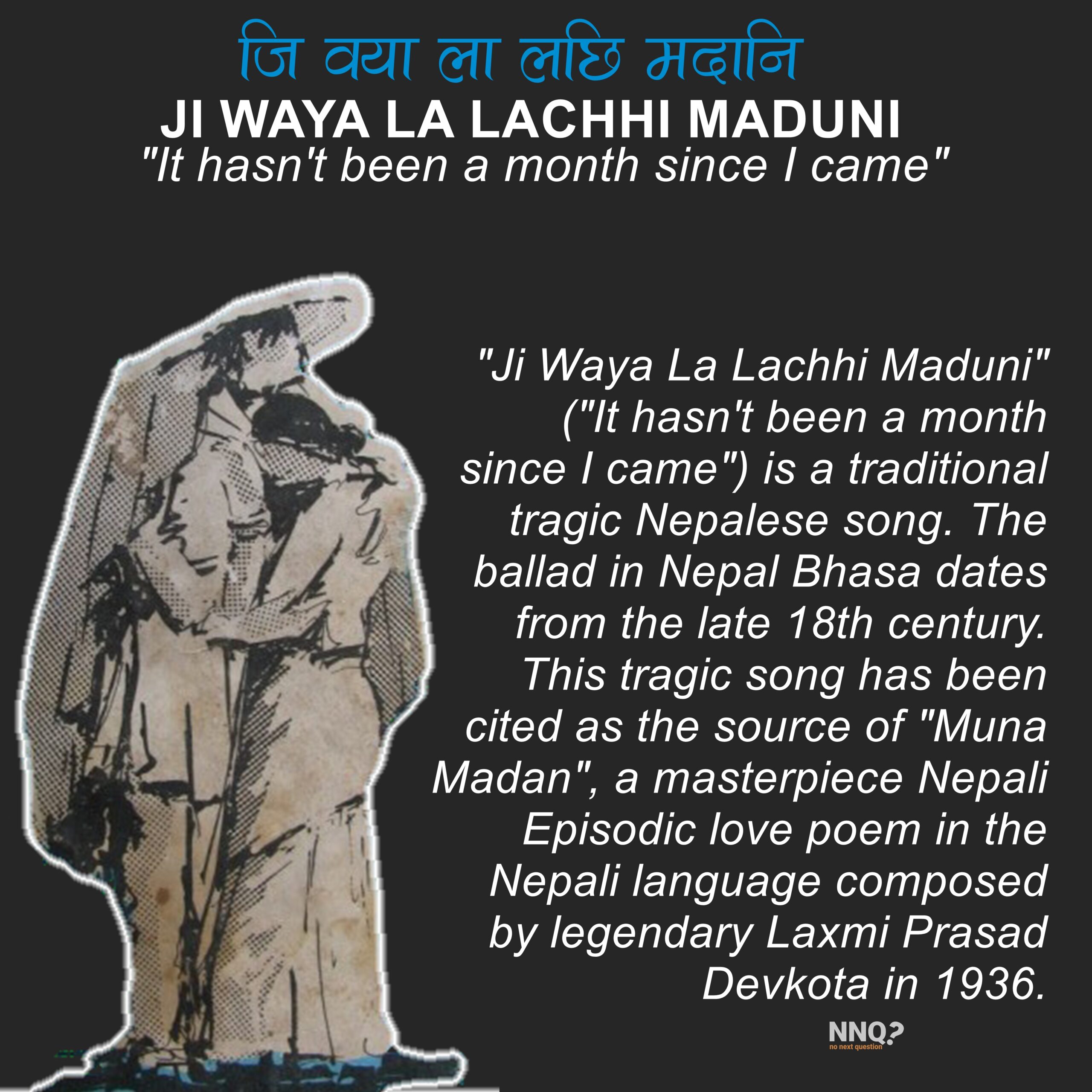Ji Wayā Lā Lachhi Maduni (It hasn’t been a month since I came)
“Ji Waya La Lachhi Maduni” (“It hasn’t been a month since I came”) is a traditional tragic Nepalese song. The ballad in Nepal Bhasa dates from the late 18th century. This tragic song has been cited as the source of “Muna Madan”, a masterpiece Nepali Episodic love poem in the Nepali language composed by legendary Laxmi Prasad Devkota in 1936.
The ballad “Ji Wayā Lā Lachhi Maduni” is in the form of a dialogue. There are three persons, husband, wife and mother-in-law. The man is about to leave Kathmandu for Tibet at work. The song starts with the wife pleading with her mother-in-law to stop him, saying that it’s not even been a month since she came to their home and he wants to go away. She offers to hand over her trousseau so that he can start a business in Nepal and not have to go to Tibet. But the husband consoles her that he will be back within a year or two.
He starts on the journey after performing an auspicious ceremony, “accepting the ritual gifts with his right hand and wiping away the tears with his left hand”. A few months pass, there has been no word from him, and the wife sees bad omens. One day, a deceitful friend brings a message that her husband has died in Tibet. Distressed, she expresses her wish to join her husband in death and commits sati despite her mother-in-law’s entreaties not to do so. Three years later, the son returns home from Tibet. His mother tells him from the window that he can’t come inside the house because they have already performed his death rituals. She also tells him that his wife committed sati after hearing that he was dead. The son is shocked, and goes away and becomes an ascetic.
“Ji Wayā Lā Lachhi Maduni” is a popular seasonal song in the Newa community of Nepal and is sung during the rice planting season. The song’s theme is based on the life and times of the merchants and artisans of Kathmandu who used to go to Tibet for long periods in the past. Known as Lhasa Newar, they operated business houses in Lhasa and other cities and conducted trade between Nepal, India and Tibet. The artisans-built temples and created artworks for the monasteries. The tradition goes back centuries.
Wives and families were greatly concerned when the travellers left as they often died on the trek across the Himalaya mountains or of the harsh climate on the Tibetan plateau, and ballads describing their hardships are frequently sung.




